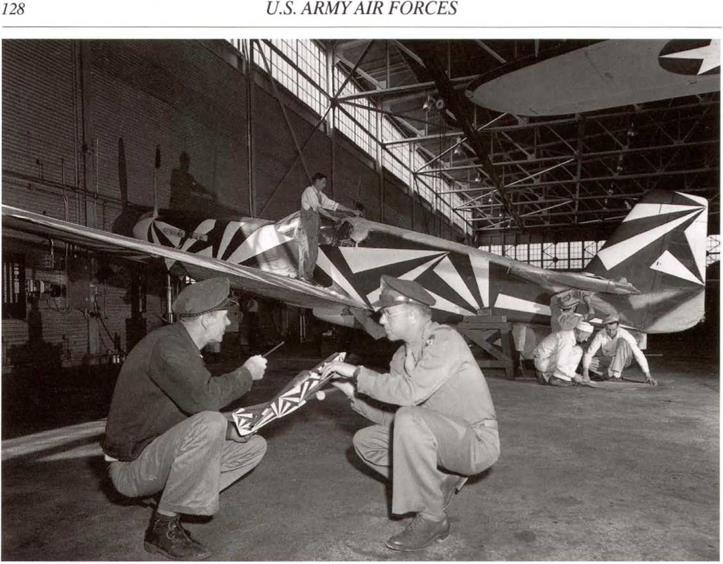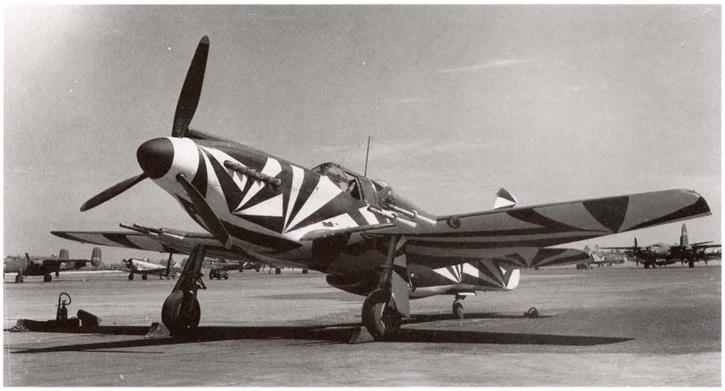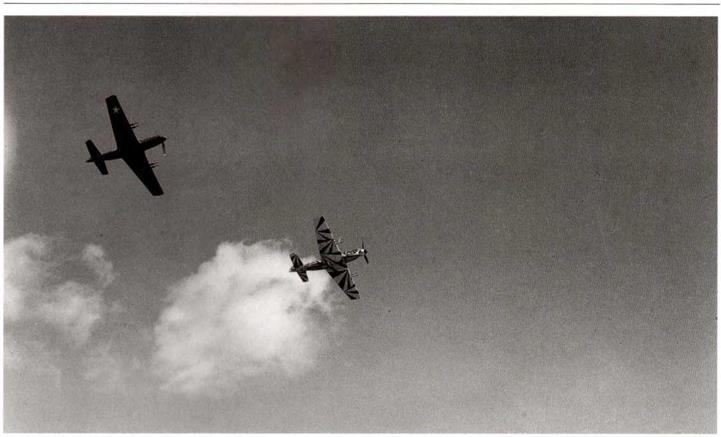Gen. Arnold queries U. S. Air Forces Commanders world-wide as to value of camouflage on airplanes. Urgent Secret teletype used, March 27, 1943
Gen. Arnold was taking a keen interest in the use of camouflage on the AAF’s combat aircraft and wanted to find out if the various USAAF Commanders world-wide would accept the deletion of camouflage on all airplanes except transports. He asserted that the airplanes would gain about twenty to twenty-five miles per hour in speed without camouflage.

|
|
|
|
In-flight view of the confusion camouflaged P-51A in formation with a normally finished neutral gray P-S1A. The flight tests showed no advantage over the normal camouflage. (USAF) |
Eglin Field issues report on Test of Confusion Camouflage for Fighter type Aircraft, March 27, 1943
In its continuing tests of various types of camouflage for aircraft, Eglin Field revisited the use of confusion camouflage for fighter type aircraft. They ran these tests on a P-51 A aircraft painted in a disruptive scheme of insignia blue and white chevrons. This scheme was applied to both sides of the fuselage and the vertical tail and all lower surfaces of the P-51, but not to the top of the fuselage or the wing and horizontal tail surfaces. For the purposes of the tests no star insignia or radio call numbers were used on the aircraft.
The results, reported in document 3-43-29, dated March 27, 1943, showed that the disadvantages of the scheme far outweighed any possible advantages, and the report recommended that no further use be made of this type of camouflage. (Note: this was a replay of similar testing done by the Air Corps Board in Study No. 42 and came up with the same negative results. See author’s volume on the Air Service and Air Corps).
Camouflage materials change for Douglas C-54A, ordered April 9,1943.
Douglas Aircraft was told to change the camouflage finish materials for the Dark Olive Drab and Medium Green colors to meet the requirements for photographic infra-red reflectance in accordance with AAF Specs. 14106Aand 14109A. This was to be effective on C – 54A 42-107426 and subsequent aircraft. It was permissible to use up existing materials, as long as the called for effectiveness was met.












